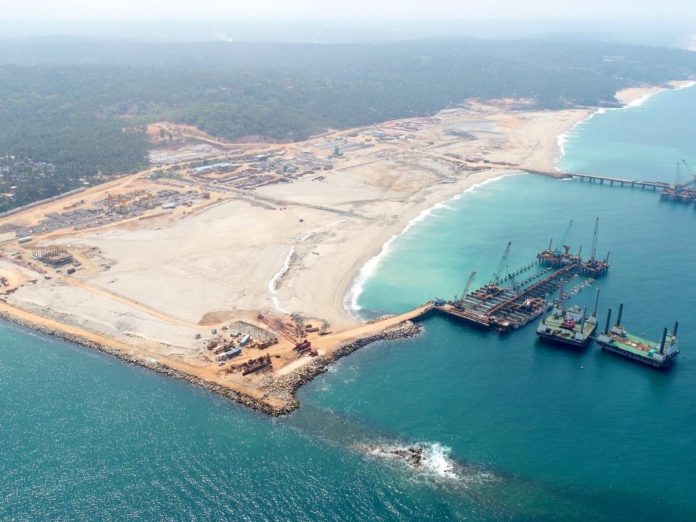In a significant development for the international deep-sea facility at Vizhinjam, a second Chinese vessel, the Zhen Hua 29, arrived at the port on Monday, carrying a vital ship-to-shore crane.
Port officials confirmed that the vessel had initially reached the Kerala coast on 9 November and had been awaiting clearance from the Ministry of Home Affairs (MHA) to berth at the dock.
Clearance from the MHA was granted on Monday (13 November), paving the way for the Zhen Hua 29 to dock at the port at around 3 pm on the same day.
The under-construction seaport received its first cargo vessel on 12 October with the berthing of the project cargo vessel, Zhen Hua 15 from China, sailing under the flag of Hong Kong and carrying one quay crane and two yard cranes.
In addition to the ship-to-shore crane designated for Vizhinjam Port, the vessel also transported multiple yard cranes intended for Mundra Port in Gujarat.
Upon completing the offloading of the ship-to-shore crane, the Zhen Hua 29 is scheduled to depart for Mundra port, as disclosed by port authorities. This follows the arrival of the first ship, Zhen Hua 15, at the port, which carried two-yard cranes and a ship-to-shore crane for the deep-water facility.
According to the Economic Times report, all three cranes have been successfully offloaded and installed at the Vizhinjam Port, a project being executed under the public-private partnership model.
Vizhinjam Port authorities have placed an order for eight rail mounted quay cranes and 24 rail mounted gantry cranes to Shanghai-based company, Zhenhua Port Machinery Company Limited.
The rail mounted gantry (RMG) crane is a specialised crane designed to move shipping containers from one location to another with precision and efficiency.
RMG cranes are typically mounted on rails, allowing them to traverse the length of the terminal and position containers at specific storage locations or onto trucks for transport.
On the other hand, the quay crane is a type of large dockside gantry crane found at container terminals for loading and unloading containers to and from container ships, respectively.
The quay crane to be employed at Vizhinjam Port is of Super Post Panamax size, which is currently the world’s largest container crane size. The cranes will have a 65-tonne lifting capacity and can therefore handle ships of Super Post Panamax size or 22 containers wide.
The third project cargo vessel is anticipated to reach the location on 25 November, followed by the fourth vessel on 15 December. The remaining four ships are scheduled to arrive between January and March.
The Adani Group is the private partner in the development of this ambitious project, set to become one of the largest ports globally upon commissioning.
Initially slated for commissioning in 2019, the project faced delays primarily due to challenges related to land acquisition. Local fishermen vehemently opposed the port’s construction, citing concerns that it would negatively impact their livelihoods, leading to violent protests.
As the Vizhinjam Port project progresses, the successful docking of the Zhen Hua 29 marks a significant step forward, underscoring the ongoing international collaboration and logistical efforts involved in the development of this major deep-sea facility.
The Adani Ports and Special Economic Zone (APSEZ) is hopeful of completing the much-touted and delayed international container transshipment port at Vizhinjam by May 2024.
Vizhinjam Port
The Vizhinjam Port is an ambitious step forward on the path to prosperity. Located in Vizhinjam, Kerala, APSEZ is developing this deep-sea water port as India’s first mega transshipment container terminal.
The world-class, future-ready port is the only transshipment hub in the Indian subcontinent, closest to the international shipping routes, and is centrally located on the Indian coastline. It has a natural draft of 20-24 m and minimal littoral drift.
Vizhinjam Port offers large-scale automation for quick turnaround of vessels with state-of-the-art infrastructure to handle megamax containerships. Its capacity in phase 1 is to be 1 million TEUs and in subsequent phases, another 6.2 million TEUs will be added.


